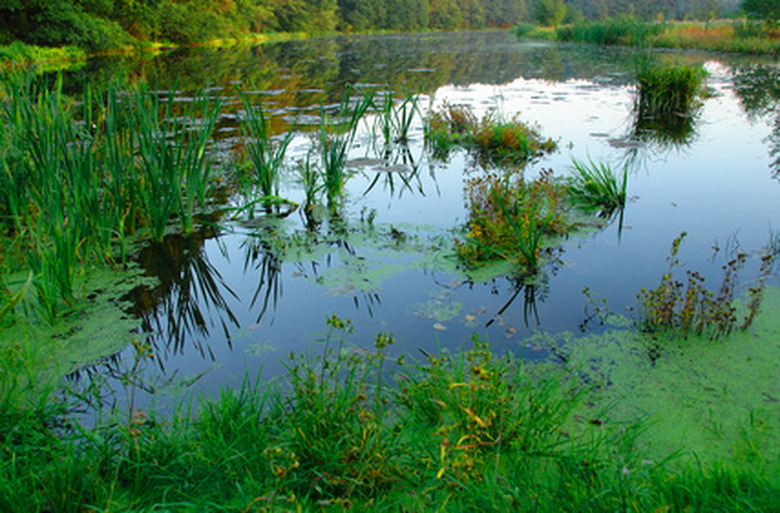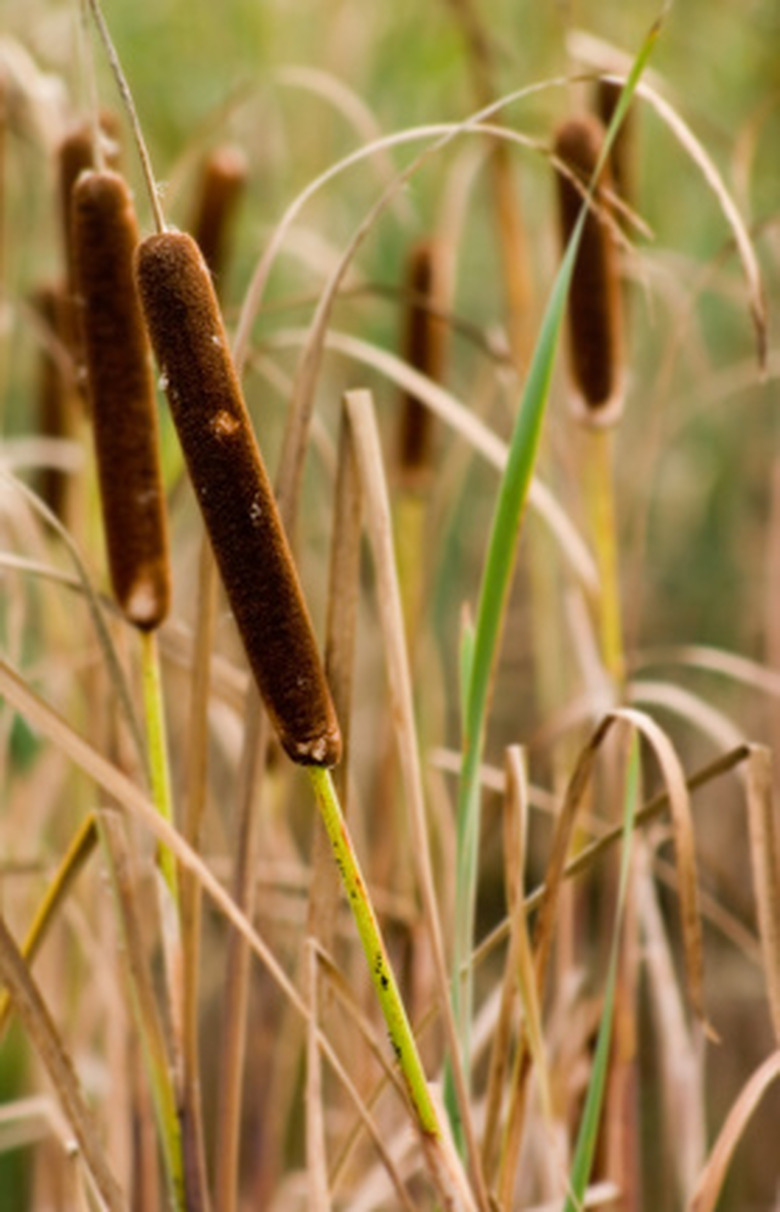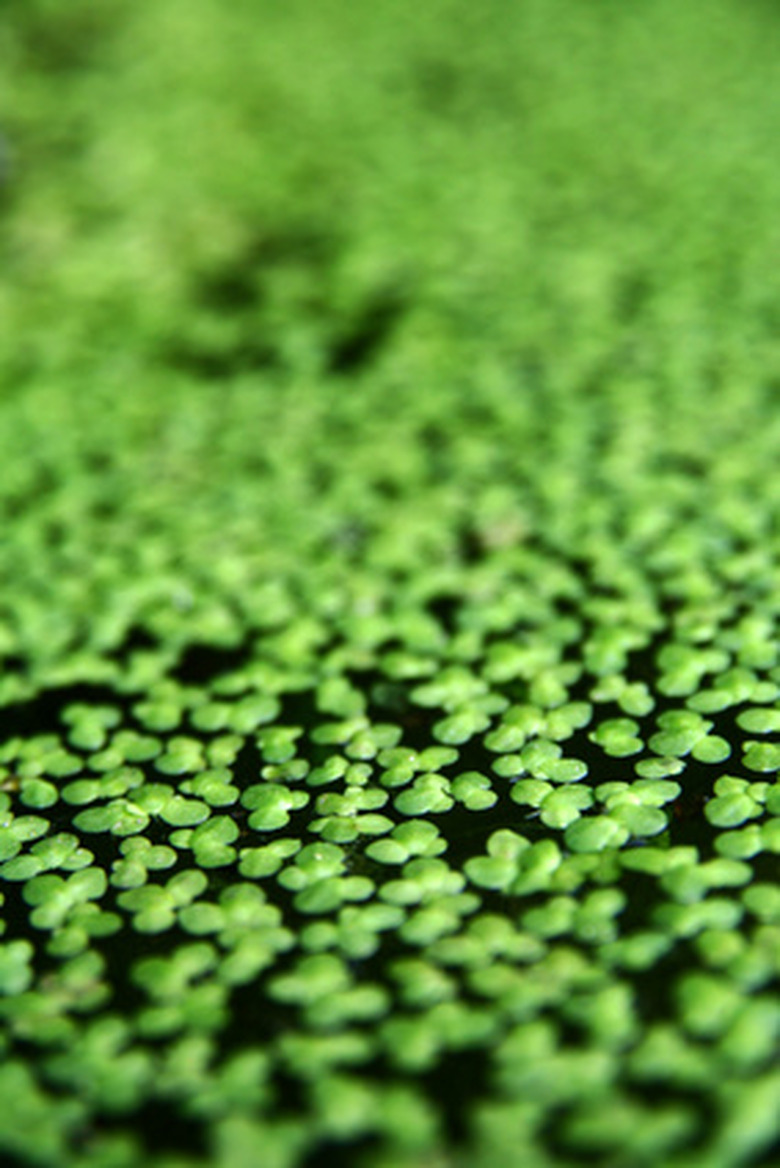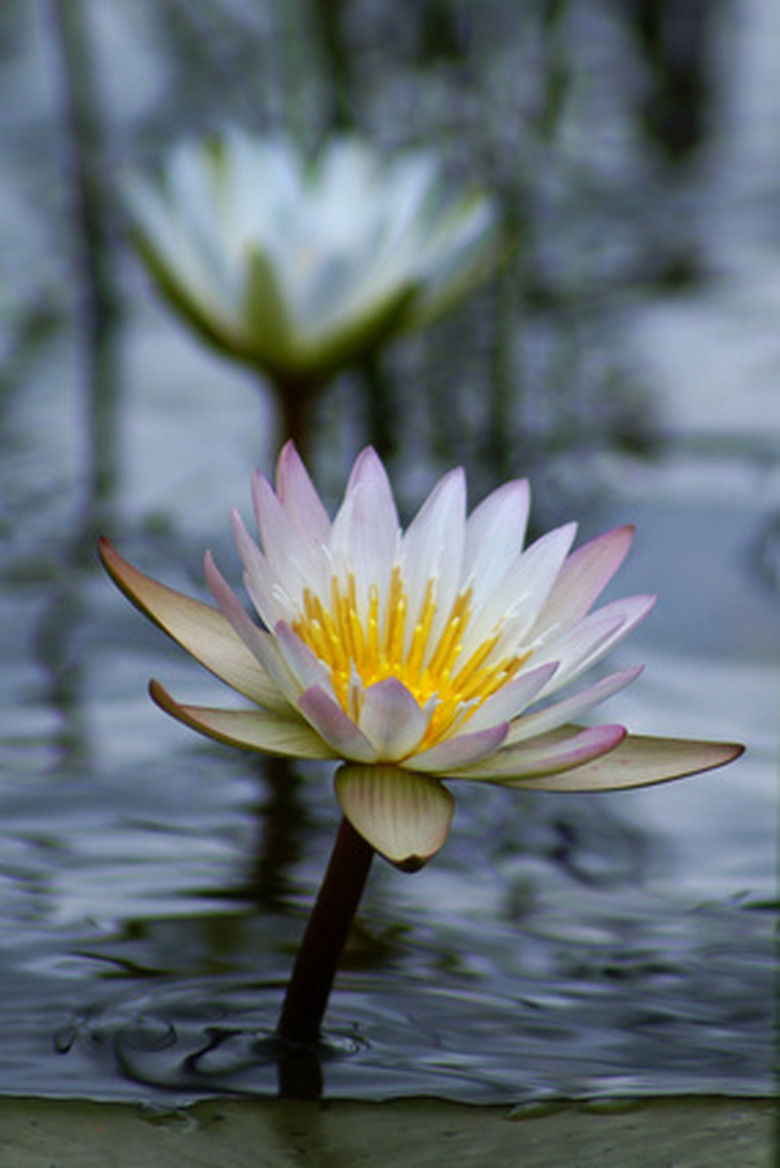Which Plants Grow In Ponds?
Freshwater ponds are natural habitats for wildlife or are man-made ornamental features in gardens. While all ponds support plants at various depths of water ,or in or out of the mucky pond soil, the native plant species vary by location in the world. Evergreen plants intolerant of winter frosts grow in tropical regions, while in temperate climates, plants that go dormant in winter and resprout from their roots are typical.
Marginal Plants
At the edge of the pond where water is shallow and often fluctuates depending on rainfall, is a zone called the margin or littoral zone. Plants that grow here are referred to as marginal plants. Examples of marginals include cattails (Typha spp.), arrowheads (Sagittaria spp.), sweet flags (Acorus spp.), sedges (Carex spp.), flag irises (Iris spp.), rushes (Juncus spp.), water crowfoot (Ranunculus aquatilis) and pickerelweeds (Pontederia spp.). As water levels change during the year, these plants may be inundated and heavily submerged or may be growing on dry soil during a drought.
- Freshwater ponds are natural habitats for wildlife or are man-made ornamental features in gardens.
- water crowfoot (Ranunculus aquatilis) and pickerelweeds (Pontederia spp.
- ).
Freely Floating Plants
Sometimes called oxygenating plants since their leaves release oxygen into the water directly, freely floating plants have roots but are not anchored in soil. Water currents or wind move these plants around the surface or just below the water's surface. Plants that remain primarily above the surface include duckweeds (Lemna spp.), frogbits (Hydrocharis spp.), mosquito ferns (Azolla spp.), water lettuce (Pistia stratiodes), water chestnuts (Trapa spp.) and water hyacinth (Eichhornia crassipes). These plants can proliferate in the warm summer months and cover the water surface, cooling and shading the water below.
- Sometimes called oxygenating plants since their leaves release oxygen into the water directly, freely floating plants have roots but are not anchored in soil.
- Plants that remain primarily above the surface include duckweeds (Lemna spp.
- ),
Some plants may take root but often freely float stems and leaf fragments in the water, in the top 24 inches below the surface. Hornworts (Ceratophyllum spp.), water weed (Egeria densa), curly water thymes/elodea (Lagarosiphon spp.), and water milfoils (Myriophyllum spp.) are examples.
Pond Bottom Plants
The depth of water in which these plants grow best varies. A common feature is that pond bottom plants grow from fleshy stems called tubers or rhizomes with roots anchoring them in the mucky soil. These plants can be oxygenating types like the pondweed (Potamogeton spp.) or ornately flowering with floating leaves attached to tethering stems like waterlilies (Nymphaea spp.), pond lilies/spatterdocks (Nuphar spp.) or lotuses (Nelumbo spp.). Lesser-known pond bottom plants include water hawthorns (Aponogeton spp.), gorgon plants (Euryale spp.), floating hearts (Nymphoides spp.) and water platters (Victoria spp.). Their foliage is nipped by frost and dies, sinking to the pond floor to decay and the roots survive in winter as long as they do not dry out or ice forms in the water as deep as the soil line. Roots of tropical plants may not survive winters that create water temperatures below 40 to 50 degrees F.
- Some plants may take root but often freely float stems and leaf fragments in the water, in the top 24 inches below the surface.
- water weed (Egeria densa), curly water thymes/elodea (Lagarosiphon spp.
- ),
References
- "The Practical Rock and Water Garden;" Peter Robinson; 2002



